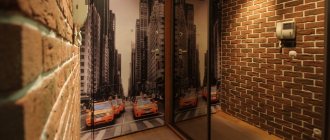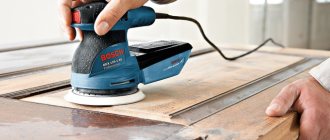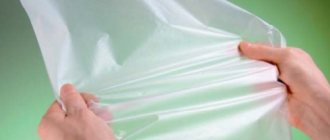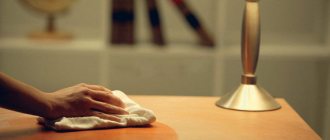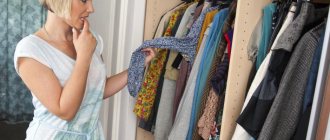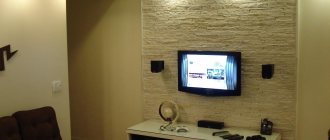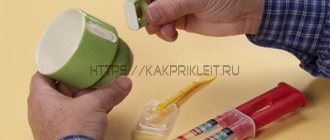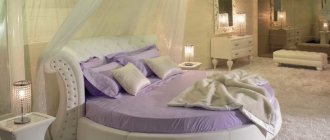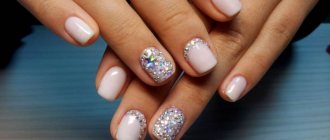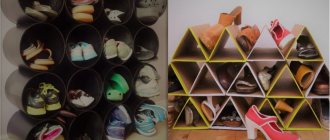Depending on various features, films are divided into different types. According to manufacturing technology, they are of two types:
- calendered;
- cast.
The first ones are made from vinyl using a special machine called calender machines. They represent a complex system of rollers through which raw materials pass. As a result, it is given the desired shape and thickness, and the output is a finished film.
Cast ones are made on simpler machines, which usually have no more than three rollers. They have worse characteristics (in particular, they are less durable). However, the cost of such materials is lower because their production requires less raw materials. Most often they are made of polyvinyl chloride (PVC).
Depending on the number of layers, films are divided into:
- three-layer;
- multilayer.
Three-layer consist of 3 layers:
- The basis. It is a layer of polymer material that makes up the main part of the material. A drawing is usually applied to the base.
- Protective layer. It is a thin film that protects the base from mechanical damage.
- Adhesive layer. It is a sticky substance applied to the back of the base. Provides adhesion to treated surfaces.
Depending on the purpose of the film there are:
- furniture;
- glass
Furniture coatings are an opaque, relatively thick coating. Most often it imitates the pattern of solid wood. However, other types of patterns are also widespread: stone, tile, even texture, painted in any color. The material is intended for gluing furniture and wood.
Glass ones are intended for gluing transparent surfaces. They can be glass interior doors, windows, mirrors. Such films are transparent and often have some tint (for example, light blue). Often patterns are placed on them that are intended to change the appearance of a window or mirror, decorate it, or decorate it. The film also plays a purely utilitarian role - it protects the glass surface from mechanical damage and prevents scratches.
Depending on the type of surface, films are divided into the following types.
- Glossy. As the name implies, they have a shiny glossy surface.
- Matte. They have a matte surface. Can be decorated to look like wood or stone.
- Mirrored. The surface of this type of material is capable of reflecting other objects.
- Holographic. They have a pattern that creates the illusion of a three-dimensional object.
As for raw materials, the material can be made from:
- PFC;
- vinyl;
- polyester;
- propylene.
Self-adhesive film for furniture
Types and types of films for furniture
The variety of films is very large. They differ in production method, structure, surface, design, and scope of application. Finished products consist of three main layers:
- External. It can be polyvinyl chloride, propylene, or polyester. The most common are vinyl models. They are characterized by an affordable price and a longer service life.
- Glue. Serves for gluing the canvas to a surface, which can be almost any - wood, chipboard, MDF, laminated chipboard, ceramic tile, glass, metal, plastic.
- Protective. It is represented by a film layer or paper, which is removed only immediately before starting work.
As noted earlier, according to the production method, calendered and injection molded options are distinguished. By structure: single-layer and double-layer. But the design of the material can be very diverse. It can imitate wood of various species, natural and processed stone, masonry and ceramic tiles, fabric, and display various images and scenes.
Colored films for furniture
Self-adhesive PVC film is an excellent tool that can be used to decorate and repair furniture. It has a wide variety of colors and textures. The material can be used to cover old cabinets, cabinets, chairs, tables, shelves, giving them new life, partially changing the design of the room. However, before applying it, it is necessary to prepare the surface and make it perfectly smooth.
The choice of a specific option depends, first of all, on the room. Thus, plain models of various colors are suitable for decorating children's playrooms and kitchen sets. A canvas that imitates stone can be used to decorate a decorative fireplace. To decorate the bedroom and living room, you can choose a surface that replicates natural fabrics, such as velor and velvet, to give the furnishings additional softness.
Films for wardrobes, glass and mirrors
The technology of decorating glass and mirrors with films allows you to expand design possibilities and give the item in question individuality and uniqueness. Self-adhesive fabric acts as surface protection from cracks and falling fragments, and also as interior decor. Colored, stained glass, as well as products with plot designs and ornaments are used for work.
Colored options are used to color the transparent glass elements of the coupe. Using stained glass models, interesting designs are created, and the material has a high degree of transparency. Decorative films, while maintaining good light transmission, help to partially or completely hide the contents of the cabinet, or close windows and glass inserts on doors from prying eyes.
How to choose film for furniture?
When choosing a finishing agent, several characteristics are taken into account. The properties of the material depend on the type of polymer component. According to the composition of the product, they are divided into:
- propylene;
- polyvinyl chloride;
- polyester.
The type of surface determines the scope of use of the decorative coating. There are the following types of self-adhesive film:
- Glossy. Used for finishing items in rooms with poor lighting and rooms without windows.
- Matte. The decorative coating fits well into the interior of a bright, spacious apartment.
- Transparent. Used to preserve the appearance of an item and protect it from scratches.
- Holographic. Suitable for any premises. Creates effects of play of light. Colors change depending on the angle of incidence of the light beam.
- Mirror. Helps visually increase the area of a small room. With the correct arrangement of pieces of furniture, you can create an original design.
When choosing, the structure, which depends on the composition, is also taken into account. There are the following types of self-adhesive materials:
- Single layer. They are produced by mixing different ingredients - a polymer base, plasticizers, dyes, resins.
- Double layer. They have a paper or fabric base. The surface is made of polymer components. A drawing is applied to it.
The material can imitate wood, natural stone, ceramic tiles, tapestry or metals. This is taken into account when choosing films for finishing rooms for various purposes. Coverings with images of fairy-tale or cartoon characters are suitable for a children's room. For the corridor, a material that imitates stone or brick is used.
Features of gluing door panels with self-adhesive film
If the door leaf is flat and there is no need to paste over its ends, then the procedure described above is exactly your case and there is practically nothing to add to it, except for the need for thorough preparation of the surface, and this consists of:
- filling all small depressions with putty, followed by sanding them;
- removing protrusions, paint and varnish deposits;
- replacing nails with protruding heads with self-tapping screws with recessed heads and putty.
If you have to cover the ends of the door leaf with film, then you must take into account the thickness of the film and, if necessary, remove excess material from them so that the leaf fits into the door frame without resistance, otherwise the film may simply tear off.
If the film is thick and elastic, it is better to paste over the corners with pre-heating with a hairdryer and fixing until it cools with various devices and (or) using pads and clamps. Also, do not allow the film to overlap; cut out the excess.
But if the door leaf has recesses (recesses, imitation panels), then there is one way that allows you to carefully cover it with self-adhesive film at home.
- To do this, it is advisable to choose a film that is not very thick.
- Apply self-adhesive tape to the canvas with maximum adhesion to the surface.
- Prepare pieces of plastic film or fabric to cover the recesses in the door leaf and a sufficient amount of sand to fill them. You will also need covering pieces of flat plastic or fiberboard with a flat load (maybe the same sand in bags).
- Use a hairdryer to warm up the areas above the recesses and press the heated film into them. Quickly, before it cools, cover this place with the prepared substrate, level the sand in the recesses and load it with a load. Hold, depending on the characteristics of the film, for half an hour - an hour. If necessary, the procedure can be partially repeated if you are late with the cargo in some places. If the sand for filling is also heated to a temperature of 70 - 80°C, then most likely you will not need it.
And the very last, but extremely important piece of advice. If during the process of gluing (especially on corners) you often have to undermine the already glued film, it, caught with your fingers, stops sticking. You can use permanent tack glue, which is actually used on it and is sold on the Internet. Therefore, when preparing for large-scale repairs using self-adhesive materials, make sure to purchase it - you will not regret it. And in any case, you will protect your nervous system.
We recommend other articles on the topic
Assembling and decorating a coffee table with your own hands, dimensions, photos, drawings
Standard sizes of kitchen cabinets
Furniture dowel for fastening - what it looks like and where it is used
Massage table - types of designs, making it yourself
How to properly cover a cabinet with self-adhesive film
The work of covering a sliding wardrobe with Oracal film will not take much time, the main thing is to be patient and familiarize yourself with the technology. In addition, you need to prepare the tool.
Required tools and materials
Before covering an old cabinet with self-adhesive film, we prepare the following tools:
- construction tape or long ruler;
- a sharp knife for cutting fabrics or scissors;
- black marker or pencil;
- dry cloth;
- hair dryer;
- flower sprayer filled with soap solution;
- self-adhesive film for the cabinet.
When all the tools and materials are prepared, you can begin the main work.
Diseases and pests of lilies - why they don’t bloom, fight and treatment ⚜
Preparation
Work begins by preparing the base. First, all the fittings on the kitchen cabinet are removed, and the doors are also dismantled. Now we examine the surface of the cabinet for defects, chips, gouges or cracks, and other protruding parts.
We unscrew all the bolts with a wrench and use a Phillips screwdriver to remove screws or self-tapping screws. It is more difficult to level out uneven areas; they are filled with putty. After the solution has dried, the surface is cleaned with fine-grain sandpaper. Before laying the film, it is necessary to degrease the furniture. To do this, use a solution of ethyl alcohol or a mixture of water and detergent.
If the cabinet is made of chipboard, MDF or natural wood and does not have a special coating, then it is better to use a primer to improve adhesion. The solution is applied to the base and allowed to dry.
Preparation for gluing
In order for the self-adhesive film to lay flat, you need to know the rules for handling it. First of all, remember that it is thin and any protrusions, depressions, or irregularities will be visible, especially on a glossy monochromatic film. Therefore, before gluing, the surface is leveled to an ideal state. If we are talking about old furniture, you can use wood putty. You can dilute regular finishing putty with PVA diluted with water (1:1). Use this mixture to seal all uneven surfaces. Just mix very small portions - literally a couple of tablespoons of powder. Try to immediately make the surface perfectly smooth - after drying it is very difficult to sand.
This is how you can use self-adhesive to change an old refrigerator
The leveled surface is cleaned of dust and dirt (with water and dishwashing detergent) and dried. Everything must be removed carefully: even drops of fat, if we are talking about changing the “image” of the kitchen set. If you use abrasive or acid-containing products, everything will need to be thoroughly removed and washed several times with water and liquid dishwashing detergent.
If the surface is loose (there are areas of putty, for example), it is better to cover it with a primer. The primer is selected according to the type of surface, taking into account the adhesive composition on the PVC film. A universal option is PVA glue. It can be slightly diluted with water and coated with the surface. Just make sure that there are no streaks or smudges left - all this will be emphasized by the film. The second primer option is acrylic. Why her? Because the adhesive on self-adhesive vinyl film has just such a base.
If the original substrate is very loose, two coats of primer may be required. After drying, check for any smudges. If everything is smooth, you can begin finishing.
Material characteristics
Furniture film helps to visually refresh furniture panels that have become boring over time in a short time. With the help of simple manipulations, the procedure can be done with your own hands in a few hours. To do this, you only need the material itself and sharp scissors or a construction knife.
Today, the range of this raw material occupies a leading position among other methods of furniture restoration. Using the material, you can bring any design solutions to life without spending a lot of money.
The popularity of using self-adhesive is due to its following advantages:
- the material is supplied in rolls, making it easy to cut rectangles and squares of the required dimensions;
- the film helps protect furniture from future scratches and chips, and if they do appear, replacing the material will not be difficult;
- self-adhesive film will help save the family budget: you won’t have to purchase a new set if it is possible to update old products;
- no additional tools are required for work;
- well suited for kitchen furniture, protecting it from grease, dirt and other damage;
- the material is easy to clean, self-adhesive compounds can be treated with detergents and gels.
The raw material consists of several layers: front, adhesive, protective. Each of them performs its own function. The very first layer, the front layer, is made from different types of materials:
- polymer film - represented by a self-adhesive type of vinyl, which perfectly covers surfaces. She looks very beautiful on furniture, and her decorative abilities are invaluable. In addition to vinyl, PVC or polyester is used;
- foil - used for lining less used pieces of furniture, most suitable for wall cabinets;
- paper - paper-based material can be glued to the ends of the shelves, since such a film does not withstand constant mechanical stress.
Decorative film can imitate a large number of surfaces: leather, wood, natural stone, ceramics, tiles and fabric. Thanks to this, it has a wide range of applications not only in updating facades, but also in ordinary decor.
Depending on the material of manufacture, self-adhesive film is divided into:
- single-layer roll products - produced on the basis of polymers, additives in the form of plasticizers, which give the raw material strength: all components are mixed together and flat rolls are formed by extrusion;
- two-layer models - in this case, two fabrics are used in production: the base and the surface; such material is technically worse than its single-layer counterpart.
Anyone can glue furniture on their own; no special skills are required. Before you start working, choose the surface structure of the film; it can be glossy, matte, transparent, mirror and holographic. Each type is used in individual cases, so it is important to determine in advance the purpose of the raw material.
Types of self-adhesive film
Depending on various features, films are divided into different types. According to manufacturing technology, they are of two types:
- calendered;
- cast.
The first ones are made from vinyl using a special machine called calender machines. They represent a complex system of rollers through which raw materials pass. As a result, it is given the desired shape and thickness, and the output is a finished film.
Cast ones are made on simpler machines, which usually have no more than three rollers. They have worse characteristics (in particular, they are less durable). However, the cost of such materials is lower because their production requires less raw materials. Most often they are made of polyvinyl chloride (PVC).
Depending on the number of layers, films are divided into:
- three-layer;
- multilayer.
Three-layer consist of 3 layers:
- The basis. It is a layer of polymer material that makes up the main part of the material. A drawing is usually applied to the base.
- Protective layer. It is a thin film that protects the base from mechanical damage.
- Adhesive layer. It is a sticky substance applied to the back of the base. Provides adhesion to treated surfaces.
Depending on the purpose of the film there are:
- furniture;
- glass
Furniture coatings are an opaque, relatively thick coating. Most often it imitates the pattern of solid wood. However, other types of patterns are also widespread: stone, tile, even texture, painted in any color. The material is intended for gluing furniture and wood.
Glass ones are intended for gluing transparent surfaces. They can be glass interior doors, windows, mirrors. Such films are transparent and often have some tint (for example, light blue). Often patterns are placed on them that are intended to change the appearance of a window or mirror, decorate it, or decorate it. The film also plays a purely utilitarian role - it protects the glass surface from mechanical damage and prevents scratches.
Depending on the type of surface, films are divided into the following types.
- Glossy. As the name implies, they have a shiny glossy surface.
- Matte. They have a matte surface. Can be decorated to look like wood or stone.
- Mirrored. The surface of this type of material is capable of reflecting other objects.
- Holographic. They have a pattern that creates the illusion of a three-dimensional object.
As for raw materials, the material can be made from:
- PFC;
- vinyl;
- polyester;
- propylene.
Advantages and disadvantages
The film allows you to completely renew the facades of furniture, and no special skills are required to work with it. Thanks to a huge selection of textures, colors, images, you can choose the right canvas for any interior of a bedroom, living room, hallway, nursery, office. The material has gained great popularity due to its advantages, among which are:
- Low cost. Decorating will cost several times less than purchasing new things.
- Interior renovation. With the help of the material you can often change the design of any room.
- Easy installation and dismantling. Anyone can carry out the work of applying and removing the canvas, without any additional tools.
- Easy cleaning. The surface can be cleaned using a regular sponge and water.
- Manifold. A large number of shades and textures makes the catalog products universal; they fit into any interior.
- Moisture resistance. The canvas does not allow water to pass through, it can even be used in the kitchen and bathroom, but it cannot withstand prolonged wetness.
- Resistance to household chemicals. For cleaning, you can use regular detergents.
- Resistant to temperature changes. The film is not afraid of either cold or heat, even sudden temperature changes.
Like any other material, self-adhesive products are not without disadvantages:
- Fragility. The service life of even the highest quality models does not exceed five years.
- Discoloration. Over time, under the influence of sunlight, the surface fades and loses its original appearance.
- Surface preparation. The base for pasting must be level, otherwise all defects and irregularities will be visible.
- Poor abrasion resistance. In places of active friction, the protective layer will be rubbed off.
Physical properties
If you want to quickly and efficiently restore your furniture using self-adhesive film, you should take its choice seriously. It is necessary to check what material was used to make it. In the construction market there are often cheap analogues of high-quality products made of polyethylene or polypropylene. They will not be able to cover large furniture.
The best option in this case is to use polyvinyl chloride, which is used to produce high-quality self-adhesive film.
It is necessary to find out whether the material has an additional protective coating. For example, covering a kitchen table will require a lot of strength, since this piece of furniture is the most frequently used. It is constantly exposed to aggressive substances and mechanical stress.
If this requirement is ignored, the film will lose its attractive appearance and protective function after just a month of use. After a short time, only ugly scraps will remain from it.
The material, which has sufficient strength, can be used to cover a table in a children's room - it can protect the surface from paints and inks, as well as other aggressive pollutants.
When choosing a cheap self-adhesive film, many buyers notice that after a couple of months, the colors lose their brightness. In this case, furniture requires pasting with new material. This requires additional time and money.
This problem can be avoided if you choose a coating model that has an additional protective layer. It is able to withstand ultraviolet radiation. Such protection is often found on transparent products. They are used to cover household appliances to prevent harmful radiation from entering.
Expensive models have several layers. Products with moisture-resistant properties have been developed for rooms with high humidity. It is better to apply pasting near heating devices with a thermally stable polymer.
Under what conditions can it be used?
Let us repeat that the coating is not afraid of moisture and high temperatures, and it is absolutely undemanding in terms of maintenance. In this regard, any premises, as well as furniture and household appliances, can be covered with self-adhesive film.
When does a cow start producing milk for the first time?
- This coating will help you not only update your kitchen interior as often as you like, but also save money, and also ensure that your furniture looks neat, even if you live in a private home. Undoubtedly, it is in the kitchen that surfaces are most susceptible to contamination and damage from frequent use. It is easier to use self-adhesive to correct the situation.
- In the bathroom and toilet, such a coating is also considered as the best option. The material will protect the walls from excess moisture and soap splashes, which are easily wiped off the surface.
- If you have small children in your family, then you are familiar with the troubles that their desire to draw everywhere causes. It is much easier to clean self-adhesive film from painting with paint or felt-tip pens, textile covering or wallpaper. In special cases, it is always possible to replace the film, which will not require significant costs.
- In essence, adhesive sheeting is an excellent material for a nursery, regardless of the child's age. The kid will be delighted by the bright colors in the room, and the teenager will be interested in finishing the interior of the room on his own.
- If you decide to attach self-adhesive film to objects such as a table, chairs, wardrobe, chest of drawers, then a collection of modern coating colors and illustrations will allow you not only to refresh the interior of your home, but also to completely change the style.
Advice! Choose a film based on the surface you plan to stick it on. For example, when restoring antique furniture, a transparent coating is better suited, as it will help eliminate scuffs and minor scratches without making adjustments to the color and structure of the wood. Film with mosaic patterns looks great on glass.
To care for the self-adhesive, no special products are required - just warm water and regular detergent. It is not recommended to use abrasive and powder cleaning compounds and solvents, as they damage the structure and color of the film. To remove stubborn stains, it is better to use ethyl alcohol.
Pasting procedure
You just need to cut a piece of the required size and configuration. It is worth outlining its shape in advance. If you don’t have a ruler, you can use the markings on the back of the film in the form of squares. After cutting, all that remains is to carefully glue the film, starting from the top. Gradually going down, it is worth smoothing the material, releasing excess air from under it, which can cause significant defects.
It is better to cut the material with scissors or a special knife. When doing this kind of work, you should leave 2 cm as a margin. When cutting film with pictures, you need to cut along the seams. If there is a pattern, cut it out from the front side of the covering.
Pasting the material does not require much effort. However, such work will require care and patience. This is necessary to eliminate the risk of unevenness. You should prepare for possible difficulties if you plan to apply film to the walls of the bathroom - such work will be more difficult than finishing wooden furniture.
Features of pasting:
- After preparing the pattern, the material is carefully separated from the backing. Having tried it on the desired object, the film is applied to it with the adhesive side.
- You shouldn't stick everything on at once. First you need to apply the film and inspect the product. The shape and size of the piece must match the furniture being pasted.
- Afterwards the film is distributed over the surface. To do this, you will need a dry cloth to smooth the surface.
- To prevent the formation of bubbles, the material is smoothed from the center towards the edges.
- If bubbles appear, the coating should be immediately leveled until the material is completely stuck.
When covering a large area, the material is applied to a surface greased with wallpaper glue. First you should stick the entire piece, and then start smoothing it with a dry cloth.
Gluing pictures is much easier. It is important that they look harmonious. To prevent gluing too quickly, treat the surface with powder. The film is easy to apply to wallpaper.
Chipboard film
Chipboard lamination and lamination technology.
Production of laminated chipboard. Decorative coating for furniture boards. To use chipboard in furniture production, sanded chipboard is subjected to decorative processing - a decorative coating of laminated paper (melamine) films is applied.
At this production site, sanded chipboard is converted into laminated chipboard. The production of laminated chipboards is the process of lining sanded chipboards with paper-based films (laminated paper films).
There are two methods for decorative processing of chipboards with paper-laminated films:
- Chipboard lamination.
- Chipboard lamination.
The main difference between lamination and lamination of chipboards is that during lamination, a decorative coating is created by chemical pressing and is a component of the board, while during lamination, a ready-made solid paper-resin film is glued to the board.
Useful tips
Here are some useful tips regarding applying and caring for the material.
- You should always purchase material with a small reserve. Its size should be approximately 20% of the total amount of coverage. This will avoid trouble in case of errors.
- It is most convenient to cut the film along the internal markings. Usually it is in the form of squares with a side of 1x1 centimeter.
- To glue the corners, it is better to heat the material (with a construction hairdryer or a regular hairdryer). Otherwise, there is a high probability that the self-adhesive film will lie unevenly.
- Clean pasted furniture with a cloth soaked in soapy water. Do not use rough sponges - they can damage the material. The use of aggressive household chemicals is also not allowed.
- Before purchasing a decorative covering, look for photos or videos that show furniture covered with it. Sometimes the film may not adhere very well to the surfaces being treated. It is impossible to understand how good it is in the store.
How to remove film from a surface
Sometimes it is necessary to cover objects that already have film on them. Of course, before starting work, it must be removed. This can be done in two ways:
- construction hairdryer;
- sticker remover.
To remove with a construction hairdryer, a certain area of the surface is heated, and then the old decor is removed with a spatula. It is important not to reach too high a temperature, as this could damage the piece of furniture being treated. If you don’t have a hair dryer at hand, at worst, a regular hair dryer will do. It also copes with the task of removing film, although somewhat worse.
When using chemicals, the substance is applied with a spray bottle or a cloth to the old material, left for 15 - 20 minutes, and then also removed with a spatula. WD-40 can be used as a removing compound. Solvents (acetone, white spirit) are also used. True, they sometimes corrode the coating completely, which is why it can become embedded in the wooden surface. Therefore, when using solvents you need to be very careful.
Common mistakes
Sometimes, even after finishing the furniture, bubbles, folds and other defects may appear that were made during work. Correcting defects is not possible in most cases, so the film must be removed and the procedure will have to be repeated again. When doing the work yourself, you can make the following mistakes:
- Before gluing the material to the surface, it was not treated with a cloth or brush. The important point of removing dirt and dust is to ensure a smooth coating, and the presence of small dirt particles underneath will spoil the appearance;
- the cut piece was not enough to cover the shield. This happens if you don’t take a few centimeters in reserve when cutting. Usually it is calculated at 2-3 cm, which can easily be measured on the back side of the material, where the measuring grid is located;
- the drawing on the plane does not match. Answering the question: how to properly glue a film that imitates natural materials, it is worth emphasizing that it must be cut at the seams - then there will be no problems with the pattern shifting;
- Furniture defects are visible under the coating. The reason for this error is poor preparation of the base or the use of too thin material. If the furniture is old enough, then it is better to use rolls with a thicker front layer. Before gluing self-adhesive film on furniture, all damage must be removed.
To do the job efficiently and to paste the furniture yourself without any defects, follow the technology for applying the material. It is better to pre-twist all the fittings, and process the elements of collapsible structures separately. Properly done work will delight all family members with a beautiful updated look of furniture products.
Errors when pasting
You tried your best, but something went wrong. It doesn’t matter, almost everything can be fixed safely.
Bubbles? If they are small, then simply pierce them with a needle: squeeze out the air that gets in where it is not needed and carefully smooth the problem area with a cloth. With larger ones, an ordinary syringe will help - inserted inside, it will draw out all the air, and the hole will easily disappear when smoothed.
Folds? Whatever helps dry your hair will also work great on your hair. Run a hairdryer over the folds and they will smooth out. Don’t get too carried away, otherwise, by getting rid of one trouble, you will invite another.
Crooked? If you remember to leave a margin of 1 centimeter for each fragment when taking measurements, then you definitely won’t panic: an ordinary stationery knife will correct the situation, which can be used to remove the excess, and joining will easily cover the traces of your “cunning” operation.
Uncover
Self-adhesive film for furniture is protected on the back side by thick paper - it covers the adhesive composition. On this paper, lines and numbers are written every 5 mm. Using this marking it is easy to cut pieces of the required length.
When cutting, they always make more film. The amount of reserve depends on what surface you are covering, but always remember that you won’t be able to “grow” a piece unnoticed. So it’s better to make more stock. If you are pasting a flat surface and there is no need to glue the ends, the margin may be a couple of centimeters. It's enough. If you need to glue the ends, do not forget to add twice the height of the ends, plus the same couple of centimeters, but from each edge - just in case.
The reverse side looks like this
If the edges of the part to be glued are rounded, cut off a piece that covers the entire part and leaves another 3-4 cm. When making a curved cut, the film will have to be pulled, and, preferably, there will be something to grab onto. Otherwise, the plan will not work out.
When cutting films with a pattern, if you need to combine it, you have to cut from the front part. Then they immediately match the lines of the drawing, then apply marks along the required length with a knife or scissors. Then, turning it over to the reverse side, cut along the nearest line using these marks.
How to cover furniture with self-adhesive film.
Man is designed in such a way that he needs to periodically update his environment. If finances allow, this can be done by purchasing new furniture. But if the family budget does not allow for such expenses, then simply update the façade of the old set using self-adhesive film.
With its help, you can give furniture a new look and eliminate defects that appear during its operation.
Recently, self-adhesive film intended for various furniture has become increasingly popular.
